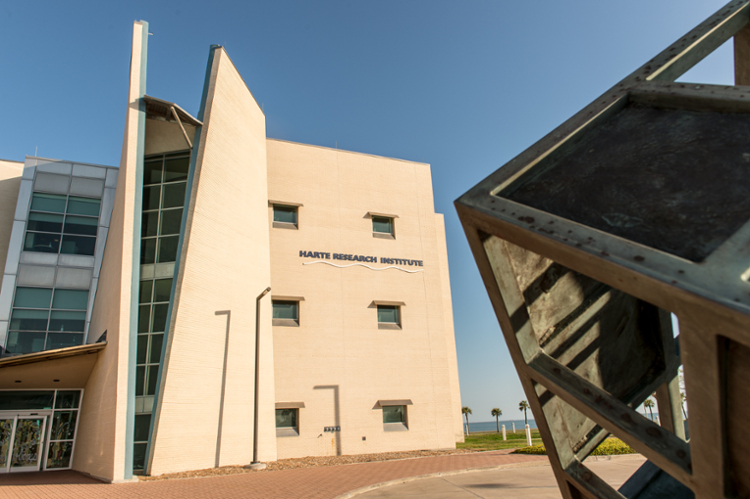TAMU-CC Researchers Report Drop in COVID-19 Cases, Slower Transmission Rates
CORPUS CHRISTI, Texas – A drop in new cases and a slowdown in the transmission rate of COVID-19 in South Texas is an encouraging development, according to researchers at Texas A&M University-Corpus Christi and other members of a special task force.
In a news conference May 29, Dr. Chris Bird, Associate Professor of Biology at Texas A&M-Corpus Christi, reported the rate of transmission of the virus is 0.9 people infected per carrier, a drop from last week’s 1.3 to 1.6 people infected per carrier.
“That has us cautiously optimistic,” Bird said. “Our transmission rate is estimated to be lower than every other part of Texas.”
A rate of 0.9 people infected per virus carrier is expected to result in five people infected over the course of a month. Without any interventions such as social distancing or the wearing of face coverings, researchers said the transmission rate here would be 2.7 people infected per carrier, which would grow much more quickly in a month, to 84 people infected from the initial carrier.
Bird and others on the research team, part of a joint task force, gave an update on the COVID-19 situation at a regular weekly presentation Friday to Corpus Christi City and Nueces County leaders.
In a slide Bird displayed during the news conference, the South Texas area as well as the San Antonio region were the only areas of the eight sections of Texas where the transmission rate is declining. The fastest rates of increase were in the far northeastern part of the state and the Amarillo area.
“COVID-19 is not presently spreading in South Texas by our best estimates,” Bird said. The findings surprised researchers since recent cellphone data in the Coastal Bend shows less social distancing, which they expect would lead to more infections. “Something is occurring here that’s leading to decreased transmission rates. This is a preliminary result, and we want to see what happens as we go into the future.”
Bird encouraged continued use of face coverings to keep the virus in check, especially as people go back to more normal activities.
Less social distancing “shows more and more the importance of wearing a face covering,” Bird said. “We are getting close to the levels of coming together that we were seeing at the beginning of March.” As people begin to congregate in grocery stores, restaurants and other areas, the risk of infection increases unless steps are taken to block the virus from spreading from person to person.
Bird reminded the community that wearing a face covering protects not only the wearer from an infected person but also protects others from the person wearing the face covering, who may not know he or she is infected and who could unknowingly spread the virus to others.
“There is a large number of people who are infected with the COVID virus and don’t know it,” Bird said. “You may never have symptoms and never know you had COVID.”
He recommended that those who are able should continue working from home.
“Don’t go out of your way to go into the office if you don’t have to,” he said. “We also recommend that you still postpone your social gatherings.”
Continued vigilance is still important because even though spread of the virus appears to have stopped, the virus is still here and could quickly begin to spread again.
“If we change our behavior, if people stop wearing face coverings, we can push the transmission rate back up,” Bird said. The rate of transmission of COVID-19 is far higher that the flu or the common cold, and should not be treated lightly. “This is unlike anything any of us have seen in our lifetimes.”
Bird noted that hospitals in the Coastal Bend are well within capacity for either COVID-19-related hospitalizations or COVID-19 patients requiring ICU-level care, and that members of the task force are communicating directly with health care officials.
The team’s presentations and findings can be seen on a special dashboard: https://www.conradblucherinstitute.org/covid19.

